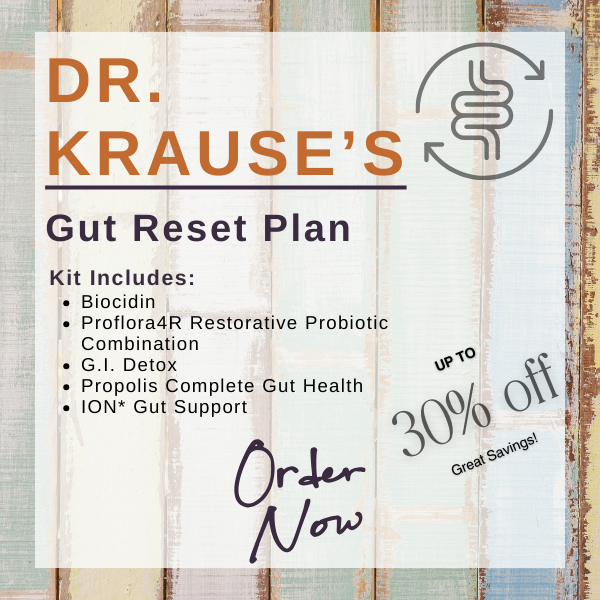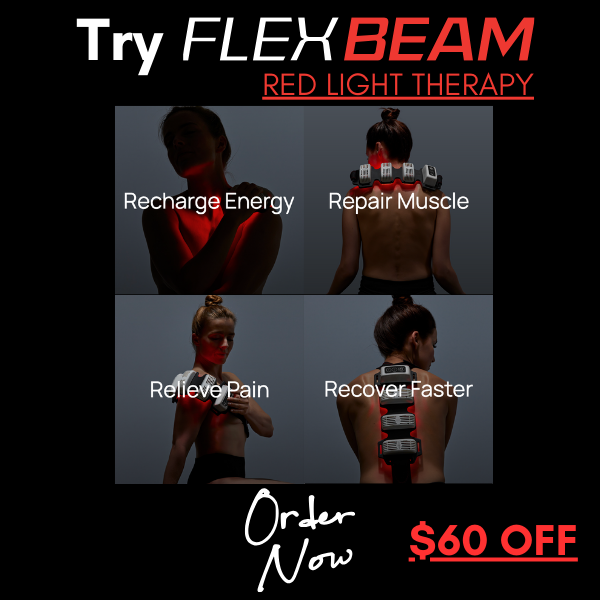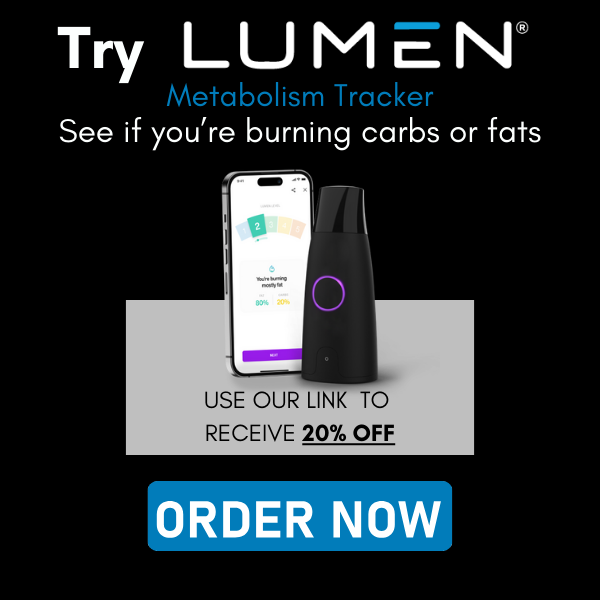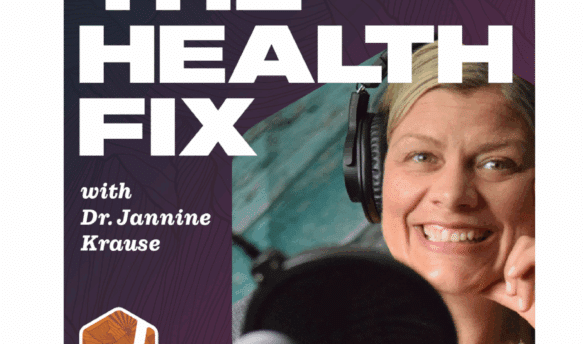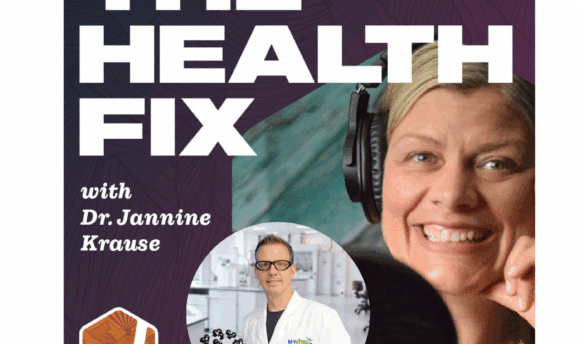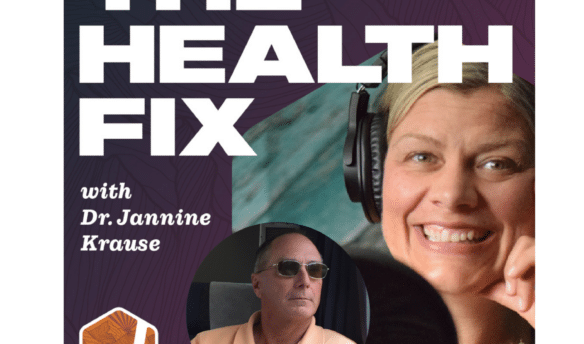Physical and emotional trauma have ways of lodging themselves in your body’s wrapping called the fascia. These traumas cause interuptions in the bodys normal signaling to the brain and circulation creating chronic pain and tension. Julia Blackwell is a fascial therapy specialist who’s impressed me by the results I achieved with her at home Roller Remedy program where she demonstrates how to use a foam roller to release your fascial tissue. In this episode of The Health Fix Podcast, I interview Julia Blackwell on what trauma feels like in the body, the various manifestations of trauma release and what you can do for the most common aches and pains. Join me, Dr. Jannine Krause in a great podcast for anyone who’s ever wondered how trauma gets stuck in the body and what it’s like to release it.
Dr. Krause’s Protocols
Instructions Included
Traveling soon? Looking to detox or reset your gut? Try one of Dr. Krause’s Fullscript plans.
What You’ll Learn In This Episode:
- What trauma can feel like in the body
- Why bodywork can help release trauma
- How to interpret what you feel in bodywork
- What quality trauma informed practitioners are doing to help people feel safe and comfortable during the treatment
- How Julia treated her forearm fracture with fascial therapy and no cast in 4 weeks
- The benefits of self fascial work to speed up healing with acute injuries & whiplash
- Why working on the feet doesn’t solve plantar fasciitis & what to do instead
Resources From The Show:
- Julia’s Website – Movement by Julia
- Julia’s Roller Remedy
- Bodywork training – check in with Julia
- IG: @movementbyjulia
Our Partners
Podcast Transcript
1:50 – How trauma gets stuck in the body
5:09 – What an extremely stressed body feels like
8:38 – Do patients in the menopausal range tend to have more manifestations of trauma?
12:26 – Some questions Julia may ask during a session
14:27 – What is to be expected during a fascial release session
19:07 – Tips for when trauma is released in a session
23:39 – Julia’s personal injury and how to deal with physical trauma
30:17 – Things you can do immediately after an injury to start your recovery
34:11 – Other common injuries that Julia sees in her practice
38:34 – Reasons for plantar fasciitis and how to deal with it
40:58 – Protocol for whiplash
43:07 – Stretching fascia? Thoughts on Yoga
JANNINE: [Intro] Welcome to the HealthFix Podcast, where health junkies get their weekly
fix of tips, tools and techniques to have limitless energy, sharp minds and fit
physiques for life.
Hey health junkies on this episode of the Health Fix Podcast. I have Julia
Blackwell, the facial release therapist back on today and we’re going to be
talking about trauma and trauma stuck in the body, but we’re also going to be
to be talking about plantar fasciitis, what happens when you get whiplash, how to work on improving
recovery after an injury, and even a fracture. Exciting stuff here, great stuff, great takeaways.
So let’s reach you to Julia Blackwell. Hey health junkies, I had such a great time talking with
Julia Blackwell last time that I had to bring her on again. Plus there are some things going on
in my world that I think maybe you guys might relate to. So I figured let’s just tell a little
bit of my story and then we’ll talk about trauma today and kind of dive into things.
So, Julia, welcome back to the health mix podcast.
JULIA: Thanks, Jeanine. I’m so excited to be here.
Well, I’m glad to have you back on again.
And since we talked before, I have been working through the roller remedy.
This is Julia’s course, guys.
And it’s been helping me to really loosen up and no joke.
Listen at my back that we just found out has an L5 S1 herniation.
And so in my mind, I’m like, you know, we know.
and as a doc I know that a lot of people will have crazy herniations and they’ll have no pain
in that particular area. And so I can’t help but think that my pain is somewhat also related to
some trauma in my life as well too. So let’s dive into talking about trauma in the
fascial tissue and how did you start to really come to think about how trauma
lodges itself in the body in this particular aspect.
JULIA: Sure, yeah, I had no idea that that was a thing.
We talked about this a little bit on the previous podcast,
but I was born with very severe nerve damage
to my right shoulder, grew up with a lot of
just incessant tightness, tension,
an uncomfortable feeling in my body,
and did not make any connection at all
that there might be some trauma
and some emotions stored in my body from that experience.
But when I discovered fascia release
in this kind of specific type of fascia release work
back in 2011, I wanna say it was maybe the following year
in 2012, I had one of my instructors
just very gently grab my SEM,
which is that more meaty part of your neck.
And it was so gentle.
And he just gently grabbed it and had me tilt my head
a little bit, nod my head up and down,
and tears just started straining down my face.
And as is so typical of most of us,
as soon as we start crying, we’re like, I’m sorry,
I’m so sorry, I have no idea why this is happening.
They had explained to me like, oh, hey,
that this is on your right side.
This is where you had a really intense nerve
regraft surgery.
This is where you had a birth trauma.
it’s completely possible that you have this emotion
stored in your tissue.
And it just completely blew my mind
because yeah, it didn’t hurt.
I had no idea it was coming.
It was just uncontrollable tears,
suddenly just coming out of my face.
And as I started working with more and more people
as I learned this type of fashion release for myself,
I was like, oh, this happens a lot actually.
So that kind of started my interest in just seeing,
yeah, where trauma might be living in our fashion.
JANNINE: Absolutely, absolutely.
And yes, I mean, for those of you guys listening,
these things happen all the time, Julia has explained it.
It happens to me a lot while I’m doing acupuncture with folks.
You know, it’s happened to me before
when I had an acupuncture session, you know,
it’s part of the experience.
And I know a lot of people are like,
oh, gosh, well, I don’t wanna have that happen, guys.
It’s freeing.
You felt better after it all went down, didn’t you?
JULIA: Yeah, and there’s a quote that I’m so sorry
I forget who said it, but it’s like,
bliss is any emotion felt all the way through.
And it’s like, well, we don’t want to sometimes bring up
anything that makes us cry or feel angry,
or it’s not always tears, it could be anger,
it could be multiple things,
but it’s like letting yourself feel it all the way through
when it comes up is such a liberating thing
that that energy is now completely out of your body
and it makes such a difference for your physical,
mental and emotional health.
JANNINE: Absolutely, absolutely.
Just the bliss, that’s what we’re after here.
So, you know, one of the things a lot of people ask me
because they’re called different things.
And I think we talked a little bit about it
in the previous podcast too,
is how does the fascial tissue feel
when someone has had trauma
or when someone is under a lot of stress?
And I talked about gummies and things of that nature.
I’d love for you to kind of describe,
kind of what about an extremely stressed body
or extremely traumatized body feels like?
JULIA: Sure, so I will just remind everyone briefly
that within our fascia, which is like this plastic wrap
that wraps around every single thing in our body,
we have all of these proprioceptors and free nerve endings.
So our fascia is very sensitive.
It’s probably the most sensitive organ we have.
And it’s constantly taking an information
about both our external environment,
what’s happening in the world around us
and also our internal environment.
So what is our experience on the inside?
And so we could have stress happening
in both of those environments,
but especially if we have a lot of internal anxiety
or have experienced trauma,
fascia is going to respond to those stimuli,
usually by tightening up or thickening
or becoming dehydrated.
So there’s a couple of things.
If you’re overall just very chronically stiff,
and I don’t mean just one area,
like kinda the shoulders, the hips, the ankles,
everything just feels stiff or very rigid.
If it’s hard to get into a full range of motion
or do certain things,
you might be one of those people
that are constantly getting injured.
You pull a hamstring and then you heal that
the next week you’ve, you know, popped out your shoulder, you know, there’s just this constant
string of injuries. A big one is simply posture because, again, our fascia is trying to protect us
and, you know, based off of what information it’s receiving, I usually find someone who is very
hunched over kind of collapsing in at the chest. That’s a really good indicator, you know,
do you ever see a depressed person standing up really tall and straight?
You know, we can kind of see our body actually pulling in on itself to protect us. That’s a big one.
You may find you’re doing a lot of shallow chest breathing up in the chest or even up in the neck
instead of being able to breathe all the way down in the low abdomen. It might feel really
difficult to do that. And also just feeling very disconnected from your body is a huge one.
If you’re a little uncoordinated, and I’m not talking like, you know, I trip all the time while
hiking or, you know, accidentally run into a door frame or something, but like really struggling
to figure out where your body is in space, you know, that’s that proprioceptive element, right,
is how much force should we be using? Where do we need to position our body to correctly
make a motion. And I find a lot that that dissociation really having a
difficulty being in your body is a good signal that fascia is very tight. It’s a
little bit overloaded with information and probably has some pent up and stored
things in it.
JANNINE: That’s a good description and I think I have a lot of
patients that have come to me over the years and been like yeah I don’t feel
comfortable in my body and often it tends to somewhat happen to as we transition from
perimenopause into menopause and hormones are changing and things are changing on that
side of things. Is there anything you’ve noticed or trends you’ve noticed with seeing certain
patients that in that menopausal range we tend to kind of have more like manifestations of
the trauma even or just in general?
JULIA: I have definitely seen a trend that there’s more pain
in the body. So as hormones are shifting, as just the body is shifting as we get older,
I’ve seen more people come in with, you know, joint pain all over or more chronic symptoms.
And it might be, yeah, like there’s a lot of chemical changes, but, you know, as we get older,
our fascia starts to become a little bit less hydrated. We’re slowly losing that water,
and we have to be more aware of putting that water back into the fascia as much as possible.
And so I had definitely seen a lot more aches and pains in that regard.
I also wanted to share, and once worked with this lady, I’ll never forget this.
It was really early on when I was practicing, which I think I would have handled this
differently if it were now. But I had this lady who, you know, was actually pretty young. I
bet she was in her 30s and she had this horrible nerve pain all over her body. And she did disclose
to me before we started that she had experienced a lot of trauma in her life. And so I’m thinking
in my head, oh, wow, I bet the fascia is going to be super tight and it’s going to be crazy and
and it’s gonna be this huge thing,
maybe some emotional releases,
and started working on things and was like,
whoa, I don’t feel anything.
I’m not feeling knots.
I’m not feeling textural differences.
It all feels pretty malleable and squishy.
And we continue working all over the body.
And I’m still getting this just lack of feedback
from her tissue.
And I was like, wow, that is so wild.
It seems like absolutely nothing is going on in here.
And as we got to the end of our session,
it suddenly occurred to me that I think
she was so dissociated from her body
because she couldn’t feel anything.
I couldn’t feel anything either.
And we had a conversation of like, hey,
I think you’ll have to really be in your body
and be comfortable being in your body to do this work
because your body’s got to show me it’s cards, essentially.
And right now it is so stuffed down that, yeah,
I’m not really feeling anything.
And I remember telling her that and she never came back.
And I think about her all the time
because it was like, oh, I don’t know if I’m ready
to just be in my body.
And I’ve seen a lot of that just overall
since that experience is like, oh, interesting.
Sometimes I may not be feeling a whole lot
or maybe you’re doing some releases on your own
and you’re like, ah, I don’t know if this is helping.
I can’t tell if it’s helping.
I can’t really tell the difference is like
that dissociation from the body is also something
I’m seeing more and more in my practice.
JANNINE: No, I have to agree with you.
I have to agree with you that, yes,
there’s that disconnect where we don’t.
And some people have learned this through
talking with their counselors and folks,
So they kind of know, you know, that they dissociate,
but some folks don’t really realize that.
And sometimes they’ll–I’ll hear like,
hey, I’m gonna massage therapist,
but she says she couldn’t find anything on me.
That’s like what you’re describing.
It’s like a huge clue in there.
So now moving forward, you’ve had more experience.
You find folks like this, what’s your post,
or what are you saying, like even right off the bat
when you start feeling the tissue, what do you say to them?
JULIA: I ask a lot of questions, possibly an annoying amount when I
start sensing that they’re having a tough time describing what’s
happening in their body or, you know, it could be again, I’m
feeling very little, but I know something is there or maybe
I’m feeling a lot and they seem to not have a reaction to what
I’m releasing. So there’s kind of a spectrum. But I ask a lot
of questions of like, Hey, can you describe this even more? Is
a temperature, is it hot or cold, is it achy, is it sharp, even if I need to give them the words to
start pausing for a second and being like, what do I feel in this moment? Can I describe it a
little bit further? And I certainly talk a lot and implement a lot of breathing practices into
fashion release because if you’re focusing on your breath, you have to be present in the moment
And bringing that presence to this exact moment in time really helps bring people back into their
body. So those are usually my first steps of like, let’s make it as safe as possible in here.
You know, let’s really try to hone in on what specifically you’re feeling. And it may take a
few times. You know, I’ve certainly had people that could not describe to me, you know, what it
it felt like to release their fascia for two, three times.
And then they’re like, oh, I’m feeling a lightness now.
I’m feeling a little bit of tingling.
And you’re like, yay, everything’s reconnecting.
JANNINE: That’s awesome.
That you can explain like what they’re supposed to feel too.
And so possibly we should go through kind of like a whole
range of like what you feel, what you’re looking for,
and then what folks should feel after or during or kind of
throughout the whole process.
And even like a couple of days later.
Let’s have you explain to folks just a week. We get an idea like what’s normal ish
You know or what what’s to be expected? That’s probably better
JULIA: Yeah, well when when releasing fascia, it’s normal to feel
Either hot or cold. I’ve I’ve had people tell me both usually the heat is a blood flow rush of blood flow getting back into an area
The cool rush is less common, but I I believe I cannot prove it. I’m sorry friends
I believe that’s some of the extracellular matrix, which is the fluid specifically in
our fascia that’s rushing back into an area that might just have a different temperature
sensation.
It’s normal to feel kind of a lightness in your body, some gentle tingling, just maybe
an easier range of motion, more freedom in a joint, things like that.
We certainly want to avoid anything that feels sharp or kind of bony, like you’re digging
into too much of a bone, anything that feels electrically.
So usually, you know, nerves weave in and out of our muscles and our tissues, and it may
depend on your specific anatomy, how close certain nerves are to the surface.
So if you’re working and something feels super tingly, like your arms falling asleep, or it’s
It’s like an electrical jolt, we definitely want to avoid that.
And as far as sensation goes, you know, it’s my goal to see if I can push someone to about
a six or seven on their intensity scale, maybe an eight if they’ve been working with
me for a while.
But we don’t want the intensity actually to be super high, especially if you have a tendency
for anxiety, or if you have experienced trauma,
you may wanna go down to like the four or five range,
just enough to light up those proprioceptors
and feel into your body a little bit more,
but without pushing it super hard
to a point where it’s hard to breathe deep,
it’s hard to move fluidly,
or we certainly don’t want you to be super sore after,
But with emotional releases, it’s interesting.
Sometimes they happen in the moment,
which I’ve experienced myself many times
and with clients many times as well.
But it may also be in the following days,
which I wanna make sure we hit on,
because knowing that may give you some insight on it,
you’re like, why am I so upset today?
I had a client just a couple days ago, emailed me,
we had worked on her core.
And she was like, hi, I just want to let you know
that releasing the core was great
and I’m really excited about this work.
And I’ve also just been crying the last two days.
And I was like, well, I’m so sorry for that.
But breathe into it, feel those feelings all the way through.
Sometimes it does take a couple days
for those emotions to be processed
to work themselves out. I’ve also had a client she was fine during the session and then I think
within the hour she was like I was so angry I canceled lunch with a friend because I was just
feeling so much anger and I was like that’s great I mean not really but that’s you know something
being stuck in your body that we dislodged so know that you know emotional releases don’t always
happen, we can’t force them to happen as much as we might like to. But, you know, they may not
always happen in the moment. So being mindful over the next couple of days after you do something
like that can give you some insight if you’re, if you’re moving through something. So no need
to be alarmed if you’re feeling very sad or very angry the following days afterward.
JANNINE: It’s funny to mention that. I don’t know how many emails I’ve had over the years
or texts, you know? Like, what did you do to me? And most people are like, I felt amazing,
but yes, then there was this emotional thing that kind of lasted a day or two or however it
might be. And so I think that, you know, I like to talk about this because not many people talk
about what can happen when you’re actually moving things. And so it’s often perceived as
something negative and like, oh, she did this to me or she caused this, you know, and I want
folks to really understand that that’s not the case. In fact, it’s just your body, like you said,
moving through something. So what what’s some of your tips that you give to folks, you know,
when they recognize that either they’re more angry, they’re more teary, what kind of things do you
tell them to to work with?
JULIA: Yeah, I mean, certainly having some support is ideal. If they really are
committed to just feeling that feeling all the way through, we’re very programmed to be like,
like, well, I’m not allowed to feel angry.
I’m not allowed to be sad right now.
And so can we actually let ourself be fully in that emotion
and move through it?
Because emotions are just energy in motion.
And if we think about fascia, again,
kind of crinkling down a little bit
when we’ve experienced trauma
and it’s forming this tight tense section,
that energy gets very stagnant.
Blood flow can’t move through that area of your body
very well.
Nerve signals can’t travel through that area
your body very well. So by essentially like pulling wrinkles out of the plastic wrap,
we’re now allowing for whatever stuck fluid and energy is in that spot to move. And so just being
prepared like, Hey, I don’t need to know why this is happening. I don’t need to put like an
experience to it. This was just something that was in my body. Let’s get it out of my body. I
I stored it for a long time, let’s make its way out.
So certainly want to just feel that rest,
if you need to really go hardcore with your self-care,
if you need to take a day off of working out
or maybe you go for a walk instead,
there’s lots of things we can do to really care
for ourself, like a little child.
We, along the way, whether it was physical or emotional,
if we have trauma, we need to care and really nurture
ourselves back to health, right?
We can’t just be upset that we’re feeling something
and want it to end.
So yeah, if you can be with it,
it’s as challenging as it is,
it really does make a big difference.
JANNINE: Good deal, good deal.
Yeah, I have to agree, I have to agree.
Now, of course there are situations in which
we definitely wanna make sure that certain folks
are either under the care of a professional,
something of that nature.
And I know that that’s something that I’m sure
you’re with all of your questioning.
you are watching out for, it’s something that is part
for the course, we have to worry about those kind of things
and also make sure that we’re being safe for everybody.
Give us a kind of background on what you will talk to folks
about if we’re looking at someone that’s coming in,
but it doesn’t have a professional that’s helping
with their mental health to be able to work
through these sorts of things.
What’s kind of your blanket statement?
What do you recommend?
JULIA: I mean, I do recommend that they get someone
that they can talk to about mental health
or you know, even just have a friend on like ready to call
if you’re experiencing something,
tell your friend ahead of time.
Like, hey, Devin tonight,
I’m gonna be doing some fashion release.
I don’t know what may happen.
Again, because we can’t really predict
when emotional releases will come up,
but at least having someone that knows what you’re doing
and you can call and they’re prepared to take a call
is really amazing and supportive
if you have someone in your life like that.
Otherwise, I would say really ease into it.
So instead of releasing, you know,
if you’re suspicious that your hips may be storing trauma
instead of doing your quads, adductors,
IT bands, glutes, calves, you know,
kind of hitting all of these areas,
maybe you just do one, one or two,
and really focus on breathing.
So if we can breathe in really deep down into the abdomen,
we’re gonna stimulate the parasympathetic nervous system,
which is the side of our nervous system that calms us down.
So it helps us be, have a little bit more space
for an emotion if it comes up, if we’re more down regulated.
So breathing and doing just one to two spots
is usually my blanket statement.
And you can always sort of add as time goes on
depending on what your experience is.
JANNINE: Makes sense, makes sense.
And I think a lot of people might be thinking now,
Okay, so we talked about like mental, emotional trauma.
We haven’t talked about physical trauma
and how the facial tissue kind of plays out with that
because boy, after an acute injury,
we could probably save ourselves a lot of grief
down the road, you know, after a fracture,
after a sprain, strain, things of that nature.
And especially if there is a little bit of anxiety
around a cast or a boot having to be put on.
I’d love to hear your take on this
and kind of what you recommend for folks
about the physical trauma side of things.
JULIA: Yeah, I mean, I think it depends on how severe,
you know, especially with like an impact injury.
But mostly I say, you wanna work your fascia
as soon as you can.
I’ll tell you a story where I learned a lot about this.
Just a couple of summers ago, I was climbing Snowmass Peak,
which is out near Aspen in Colorado.
and I fell and fractured my radius, which is forearm.
It was a really freak accident.
I had actually done all of this technical snow
when I sex climbing, and I was fine with that,
but I was coming back down and my boots were wet
from all of the snow, and I just walked across
this slab rock at just the right angle and slipperiness,
and I just wiped out, hit my right arm super hard
against the rock. And I knew immediately, I was like, Oh, no,
this is this broken. And I didn’t know what, but there could have
been multiple things. But I was 10 miles from the trailhead.
I don’t know. And so this is why you always go with a
climbing partner. Shout out to Carrie, you’re the best. She
really had to help me with just about everything, you know,
taking on and off layers, zipping anything on my backpack. It
a pretty intense journey down. And I also got back to my car and decided, you know,
it had rained on us at the very end. It was a whole story. But I was wet. I was tired.
We’d been backpacking. We’d been hiking for like 14 hours that day. It was just
all I wanted to do was go home. So from the 10 miles out with a broken arm, I also drove home
with a broken arm for about three and a half hours and went to the doctor the next day.
And, you know, I feel, I feel very lucky when I got there, they, you know, they’re like,
okay, well, you fractured your radius. And I had been thinking based on the inflammation
and some weird bumps that had formed. I thought maybe I had broken my wrist or multiple bones.
And so when she told me it was a fracture of the radius, I was like, oh, really? Is that it?
I was so excited to give me the strangest look. Like you were the most excited person to be
getting this bad news. But I decided right there, I was like, you know what? I’m not going to get
a cast. It’s just a fracture in a spot that, you know, I’m not super worried about. So I
just got myself a brace. And that very first week, I was very gently, you know, maybe once a day
taking off the brace. And I was very gently like doing a
lymphatic, I wish you guys could see what I’m doing is like just a
very gentle lymphatic drainage motion where do it anyway do it
anyway, we’ll we’ll get a clip of it. Yeah, it’s like just
slowly trying to move some things out from the wrist down
towards the front of my arm. I started releasing a little bit of
fascia around that area. So I started with releasing the bicep
little bit, releasing the peck a little bit just to maximize blood flow. And I did that,
yeah, within a few days, I bet by day three, I was doing that and continued to do that for,
you know, through the second week. And by the third week, I was very gently moving my wrists
around in little circles. And I tell you what, you guys, like, I think two weeks later, I hiked
another mountain. Thankfully, it wasn’t super technical. You know, I was not doing a ton of climbing,
but I climbed a mountain at two weeks at four weeks. I was visiting some friends out in Roanoke,
and I was paddling in a canoe, like full Pocahontas style. And everyone was like, “How are you doing
this? How are you doing this?” Having just broken your arm, and it was about maximizing blood flow.
And I also had a little, you know, one of those copper wire mats that I was also, you know, putting
my arm on to maximize some blood flow too. But yeah, essentially, I healed my arm in about three
weeks, three, four weeks tops. And the doctor wanted to put me in a cast for six. And I
truly feel I save myself from muscle atrophy and just that restriction of being in a cast.
Now I know we can’t avoid that. Sometimes it’s imperative that we do have a cast.
But even so, I would do something similar. So wherever your cast ends, can you sort of pull
that skin and muscle towards the center of your body? We want to get all of that inflammation or
fluid or whatever might be there. We want to pull it in towards the center. And can you gently
release fascia nearby. So if your cast is on your foot, can you do a little releasing on your
calf or your hamstring, something that will help send blood flow down to where that fracture is.
But yeah, I’ve seen fascia release actually really improve recovery time. One of my
practitioners broke her femur about a year ago, had a full rod needed to be put in there and
And she was like, I can’t imagine where I would be
if I wasn’t releasing fascia all the time.
Like it just helped the recovery so much.
So I certainly think this sooner, you know, it’s,
you can and start very gentle.
I really do think it does a lot for reducing recovery time.
So, you know, if you gotten a fender bit fender
and you’re feeling a little bit of whiplash,
like don’t wait until your massage therapist can see you
in two weeks, like start releasing your bachelors
soon as you can.
JANNINE: Yeah, let’s talk about this.
What can folks do?
Like I will do little clips of you.
So those of you guys who are listening,
obviously I know it’s audio,
but I will put the clips on YouTube
so you can see kind of what you can do
to release yourself.
So let’s talk about whiplash.
Let’s talk about like say someone just had a car accident
And, you know, having been in multiple my life, you know,
you feel it kind of starting like afterwards,
your adrenaline is rushing, right?
But then you get home and you’re like, oh, I feel it.
So give us a couple of things that we could do right away
just to help ourselves before we can get into massage
or chiro or whatever.
JULIA: Yeah, where’s my little,
here we go.
– Here we go.
I’m grabbing just a little lacrosse ball type of ball
that’s got a grippy surface.
So first and foremost, I would get into your pec muscle.
So right to the inside of your shoulder bone
on that squishy, muscly pocket of the chest,
I will lean into a door frame, you know,
I lean into a wall and just gently lift and lower
my hand a few times on both sides.
So we really, the goal here is to compress one area
and then get some of that active movement in,
it’s really helpful to bring in the brain to be like,
okay, everything’s okay, we can move in this range,
there’s no need to lock up, which sometimes,
it does when we get that recommendation,
or I don’t know, I even know if to call it
a recommendation, our doctor is like,
just rest, don’t do anything for two weeks.
I think that’s some of the worst advice
you could possibly be given,
unless you’ve had an unbelievably serious impact injury.
Otherwise, I would say, again, the sooner the better.
So I release both sides of the pecs,
’cause again, when we’re coming forward
with that whiplash, the chest in the front of the neck
whip forward and then we also get some tension
on that reverberation back.
But the chest will help bring the shoulders back
a little bit.
I also love to release the scalings,
which are on either side of the neck.
So we have the column of our neck coming down.
The scaling is just a little bit
to the outside of the column of your neck.
And you usually know when you have it.
So if you’re not watching this right now,
you can play around with it a little bit.
But I’m very gently using one to two pounds of pressure,
pressing the ball just straight back towards my trap.
and then tilting my head the opposite direction a little bit.
I can nod my head a few times up and down.
That’s so helpful to relax some of those muscles
that have just taken so much force and impact.
And then you can lay on the ball, on your trap.
So again, we wanna be off of the spinal cord, right?
Go just to one side or the other of the neck.
lay on the floor, do some shoulder circles,
you can lift your arm over your head, you know,
whatever you can do movement-wise
to just get that spot cross-fibrating
and moving a little bit.
Those make such a difference.
I luckily have only been in, you know,
I think two fender benders, but man,
the whiplash is a real deal.
And that helped tremendously to work on the chest,
the front of the neck and the back of the neck
before I could see someone else that would get in there
a little bit more.
JANNINE: No, that’s huge, that’s huge.
Thank you for sharing that.
‘Cause I think, you know, one of the biggest things
that I find, you know, in my practice,
but also just in general is giving people tools
that they can take action on right away
when something hits the fan or something happens
because, you know, maybe you’re outside,
it’s slippery out, you slip and fall, right?
Still potential for whiplash and hopefully no fractures.
You know, we cross our fingers on that one, but you know, just thinking about all the different things that, you know, I think a lot of us, if we had the tools of what to do in the case of, you know, emergency, we’d be good to go.
Same thing with like working with the risk, how you’re talking about the lake, things of that nature. Have there been any other injuries that you can think about that may be relevant that are common? I’m just not pulling any out of the top of my head to think about what we could tell people about with with working on things.
JULIA: Um, I mean, luckily, yeah, I guess I definitely worked on myself after the last time I had a
little fender bender, which is probably been four or five years ago, I think at this point.
Um, but you know, sometimes things, even if they weren’t an actual accident or, you know,
something, an injury that happened in the moment, um, well, it hasn’t happened to me per se.
I’ve seen this happen a bunch of times with clients, which is, you know, it’s not, you know, you fell
coming down a mountain or you got in a car accident or you came down from a jump and twisted your
knee. You know, like an actual acute thing, but you bent down to tie your shoe and your back went
out or you woke up one morning and suddenly you had plantar fasciitis. It’s like these, these things
are another part of injury that is like, how will I describe it? It may or may not be physical
damage because your body doesn’t actually have the ability to tell the difference between what’s
an actual physical threat and what it perceives to be a threat. So if your fascia has slowly been
tightening over time and your pelvis started to rotate and get in a wonky position and that certain
And muscle started to take over, certain other ones stopped working at full capacity.
And you kept bending down to tie your shoe in the same way over and over.
Eventually, there’s going to be a day where your body’s like, “Okay, we can’t do this
anymore.”
Otherwise, we might herniate a disc or we might have a pretty significant injury.
And so your body will light up a huge pain signal.
And I think a lot of times we think of that as an acute injury, like, “Oh, I threw my
back out.”
It’s like, well, I would also be absolutely working on that as soon as you can.
I know it’s tough when the pain is so intense and maybe you do want to lay down for an hour
or two and breathe and try to regulate, but then absolutely you want to be starting to
work your quads, starting to work your IT bands because that is also going to help get you
out of that acute pain too.
I can’t tell you how many times I’ve heard.
email me and they’re like, “Hey, I really want to come see you.” But I threw my back out, so
when it’s better, I’ll come in. And I’m like, “What? What? No, come right now. Like, don’t wait two
weeks. That’s going to be the worst. It’s just going to have time to set in more compensation
patterns and things like, yeah, I want to remind people that, you know, if a pain just suddenly
popped up, even if it’s super intense, it does not mean that physical damage has occurred in your
body. It’s just a signal from your body that there’s a potential for something to occur
unless you fix a problem. And so, yeah, please don’t take the advice of just rest and wait it
out and hope it goes away. Because even if that thing goes away in two weeks, let’s say,
but all you did was rest and wait it out, what actually happened was your body learned to compensate
and reroute around what pain was happening. And so most times that pain didn’t actually be
solved. What wasn’t actually solved, even though you no longer feel it, which is
yeah, important to realize, because that thing, you may turn into something else down the line,
right? So say you threw your back out and you also had a knee injury a couple years later and then,
you know, plantar fasciitis a few years after that, it’s like those things might actually be
connected because we didn’t address the original thing that was going on.
We just like crossed our fingers and hoped that it would go away on our own.
JANNINE: So, uh, yes, that is, that is by far one of the things I hear too.
Like people will call me and be like, I threw my bag out, but I can’t get in the car.
I can’t drive.
I’m like, someone just throw you in there and let’s just drag you back out.
Um, that and plantar fasciitis too.
I mean that.
So folks who are listening, if you’re wondering what that is, that’s, that’s that
intense pain on the bottom of your foot when you go to get out of bed and you like put your foot
down there like whoa what is that um this one too that one comes out of nowhere and so as you’re
go to kind of just getting that using that same ball you had and just kind of rolling the foot there
JULIA: Yeah well plantar fasciitis um is usually happening for one or two reasons so number one is tension
through the posterior fascia line um which is the calf the hamstring and the glute most generally
So I actually wouldn’t go to the bottom of the foot. I would release that backline first.
Usually that gets pretty significant results because that fascia line, it actually starts at your
forehead. It wraps around the back of your head. It goes down the spine and then through each
glute hamstring and calf and where it ends is that point of the heel where most people end up feeling
that classic plantar fasciitis pain. So if you can release areas further up the chain,
it usually stops pulling on that point at the bottom. Or secondly, which I think ultimately
tends to be more common, is there some kind of a shift up or down or a rotation in the pelvis,
which is creating a different gate and a different wear and tear pattern, which is why so many people
only feel plantar fasciitis on one foot because something’s a little bit uneven further up the
chain. So again, I would say, you know, what can we do to rebalance the hips? Because most of the
time, yeah, plantar fasciitis isn’t actually a foot problem. There’s something else fascially
speaking, pulling it out of alignment. So what that maybe is a little bit more complicated if you’re
just a beginner at this, but absolutely foam roll your calf. That’s a that’s a huge one if
if you’re experiencing that.
JANNINE: Well, I’d you mention that because yes, it’s true.
It isn’t always the foot.
Most people are gonna think rolling the foot first,
but yes, I find calves incredibly helpful
if I can get folks can massage their calves,
work on their calves a little bit.
And then something we use quite a bit
is something called the chirp in our house.
And so I’ll have people consider that.
In my office, sometimes I’ll do little like yin-tong guys.
This is between the eyes, massage there
and kind of massage out.
there’s so many things we can do when pain strikes on this.
JULIA: Yes.
JANNINE: How I call it.
So you kind of already gave us like with,
with of course the, the whiplash situation.
If someone did wake up and the neck was kind of kinked,
same thing with the whiplash.
Would you do the same kind of protocol?
JULIA: Yeah.
I woken up with some really intense tricks in my neck
where, you know, I unable to turn my head one direction
And sometimes I’ve got to go down the rabbit hole a little bit.
Sometimes it’s, you know, back down in the thoracic, a little bit, you know,
releasing the rhomboids and the lots have helped, but absolutely start with, yeah,
the same thing we just talked about and see, you know, um, the body craves balance.
And usually when we feel pain, there’s something out of balance.
And so sometimes I’ll just release one side first and see how it impacts everything.
So, you know, the chest scaling the trap and see how it feels.
And then release the other side that maybe you think is unrelated.
But in fact, it also makes a huge difference or maybe even more of a difference
than the side you thought was contributing.
So I also love playing that game as like just learning more about your body
because the feedback that we’re getting back when we do any type of healing work is so valuable.
Our body is so wise, it knows what it needs.
And so being able to trust that about your body of like,
Oh, when I have a crick in my neck,
I know that if I release my, you know, peck and scaling,
it makes it a lot better.
There’s so much empowerment that comes with
just understanding our own patterns
and understanding what might be contributing
to our specific pain or issue.
JANNINE: Absolutely, absolutely.
Yeah, it’s kind of, I geek out on it.
know a lot of people are like, I don’t know what to do. You just follow your intuition guys,
you know, and definitely roller remedy. Julie’s course can help you with all of finding all the
spots and what to do in certain areas as well. Now, last but not least, I did ask a little bit
about yoga. You know, a lot of people right now are talking about, you know, what the impact of yoga
is having on your body. And then I just interviewed another fellow and we had talked about stretching
not being that great for the body. Can you overstretch or overwork the the
facial tissue? Is there a possibility of this and what what
happens with yoga? Is it involved in that since we’re
you know lengthening and and reinforcing maybe with yoga?
Excuse my non-knowing terminology here.
JULIA: I know I’m not a yogi either so I’m
not sure how if I can be super accurate as it pertains to yoga but
I’ll start with what is a stretch, right? A stretch is lengthening of a muscle usually in one plane
of motion. So we all know the classic example of throwing our leg up on a box,
hanging our hips forward to stretch our hamstrings, right? But fascia doesn’t really work
that way. Like it doesn’t really release that way. So one of my favorite analogies for fascia,
even though it’s more three-dimensional than just one sausage casing. But if you can envision
fascia like a vacuum seal bag around your muscles and your bones, and we sucked all of the air out
of that, everything crinkles down and shrinks with it, right? And so you can crop your leg up and
push and lean and try to stretch that hamstring as much as possible, but you’re not actually going
to change much of the texture of your fascia because fascia loves compression. It definitely
needs some cross-fibering if we want to rehydrate the right areas and it also really needs and
loves movement. So stretching alone isn’t a very effective way to release fascia. So in that regard,
I would say you can’t over stretch it. So I’ve worked with a lot of people over the years with
with, you know, connective tissue degenerative diseases,
like Marfan’s or someone, it’s like Ehlers, Danlos.
– Yeah, yeah, EDS, yeah, yeah, yes.
– People with hypermobility and things like that.
And that’s essentially, those are conditions
where there’s overelasticity,
especially the two former ones,
overelasticity and the connective tissue.
But when we work on them, it only seems to help.
doesn’t actually make them any more mobile than they’re supposed to be. So there is something to
the compression and the active movement where we’re cross vibrating instead of forcing a
lengthening effect. So I think what happens, you know, could be you just strain an area of your body
by forcing something to stretch that actually just needs air let back in the bag. So the compression
cross-vibering and movement lets air back into the bag and sort of restores the movement that’s
supposed to be there without making it hypermobile. Does that answer your question? I kind of went
on a weird tangent.
JANNINE: No, no, no, it’s perfect. It’s perfect because I think, unfortunately,
we do have this concept of doing stretches and yoga and things like that and we’re always talking
about more flexibility and improving flexibility. But what if improving flexibility is actually
improving how your fossil glide, you know, I will call it gliding with your tissues and having
better proprioception to know how far you can go and, you know, your joints going safe,
I think is probably the biggest term there.
JULIA: Yeah, that’s beautifully said, because yeah,
I found, you know, we’re talking about plantar fasciitis a lot, but it’s such a perfect example where,
you know, somebody has PF and their physical therapist might have told them to put their toe
up on a wall and then just really crank into a calf stretch and it actually makes their
plantar fasciitis worse and that’s that concept of like hey maybe it actually doesn’t need
to be lengthened.
We have to, it’s that vacuum sill bag effect and we actually have to restore the facial
glide and retexturize and rehydrate fascia.
Maybe those are really better terms than releasing at times.
It’s changing the texture, changing the level of hydration and then that really helps the
pain and so getting caught and like how far you can force a lengthen doesn’t make a whole lot of
sense we want to focus even on mobility first you know how fully can we move our joints through
a range of motion before we start seeing how flexible we can come and you’re right that
proprioceptive element is super important to be like what’s too far yeah what’s gonna cause confusion
in the body because it has more length than other areas of the body, you know, again,
the body wants balance.
So if you think that your hamstrings are really tight and all you do is crank on your hamstrings,
maybe your brain is actually confused that there’s so much length in a place and it’s
not in other areas like how tight are your quads, how tight are your IT bands.
There’s all of these other components that we want to balance instead of just forcing
into that range of motion.
JANNINE: So so well set because I mean I found that even with my my back issues and things that
I’ve had over the years is like yeah there’s a definite if I work on my quads and I work
on that lateral side my quad towards the IT band a lot of things will release and I don’t
necessarily need the work on my back per se it’s even you know it’s there it’s it’s fascinating
and so you know definitely love talking with you about this so that folks can really understand
if they play with their body a little bit and they, you know, work on rolling different areas,
work on, you know, trying to see what happens if you put a formula or somewhere and move it
in, in, on your quad versus your hamstring if you’ve always been doing that or somewhere else in
your glutes even too. I find that my glutes will relax if I work on my, my calves evens.
So cool. I wear all that back there. Yeah.
JULIA: Yeah. That’s amazing.
JANNINE: Amazing stuff here. Julia, my goodness. So many good things. And guys, like I mentioned before,
where I can’t say enough about her roller remedy course.
It’s fabulous, I’ve tried it out.
I’m definitely using it.
And she, like I just mentioned,
I was talking about to the side of my quads.
Julia actually got me to think about that
a little bit more towards the IT band.
And it’s really been helping me quite a bit.
So I highly recommend you guys check that out.
And then of course, her website movement by Julia.
And then also Instagram’s movement by Julia too.
JULIA: It is, yes, mm-hmm.
JANNINE: Okay, perfect.
And she definitely, for those of you who are listening
and our practitioner, she does some courses.
You have one coming up in February.
And then after that, they’re kind of as you see fits
or do you know your schedule for 2024?
JULIA: That is what is happening in the next two weeks
in this crazy time, at least at the time of this recording.
It’s about a week before Christmas.
And so that is what’s getting on the books
in the next two weeks.
So I am doing a bodywork training February 17th through 19th.
If that’s something of interest to you,
you can contact me just via the form on my website.
There’s a lot of new sites and courses
that are gonna be uploaded,
but it is in this last final bit of 2023
that I’m like, oh my gosh, I have to put all these up.
So the schedule will be posted soon
in the next couple of weeks.
There’s gonna be a lot of options for 2024.
JANNINE: Awesome, awesome.
We’ll definitely make sure
that we get those promoted out to everybody.
And guys, head over to my website at doctorjkrausend.com
for the show notes for this one and previous ones
with Julia and I’m sure we’ll have her back
so we can talk more and geek out more.
Because my big goal is really to teach you all how
to help yourselves because Julia and I, you know,
as practitioners we can help you in the moment
but you know what, as much as we’d love you
to move in with us, you’re on your own a lot
and you gotta be able to take care of yourself.
So Julia, thanks again for coming on.
I sincerely appreciate it.
JULIA: Thank you so much.
It’s always a pleasure.
JANNINE: [Outro] (Upbeat music) Hey fellow health junkie, thanks for listening to the HealthFix podcast.
If you enjoy tuning in, please help support me to get the word out about the podcast.
Subscribe, rate, and review, and just get that word out.
Thanks again for listening.


